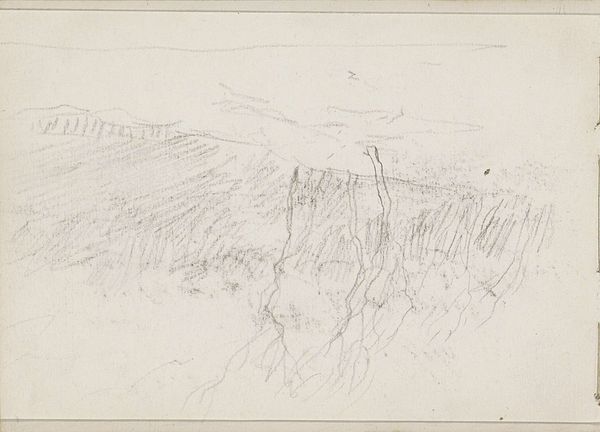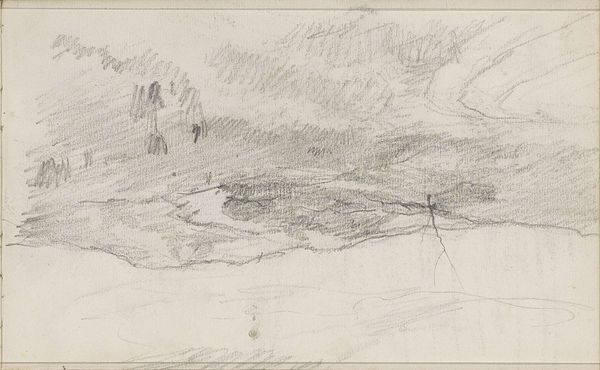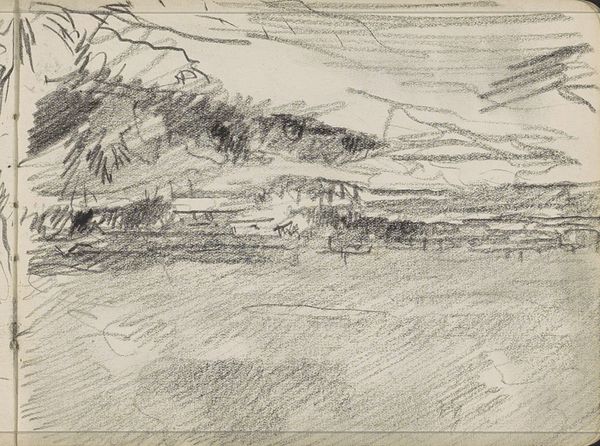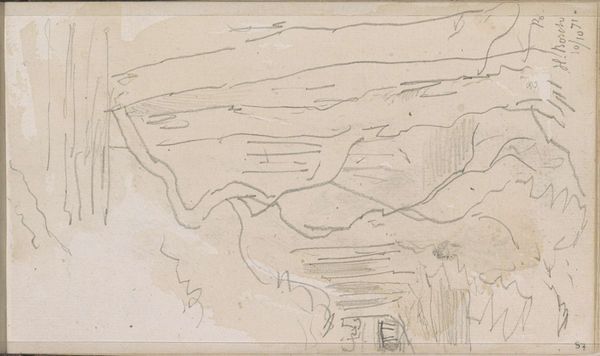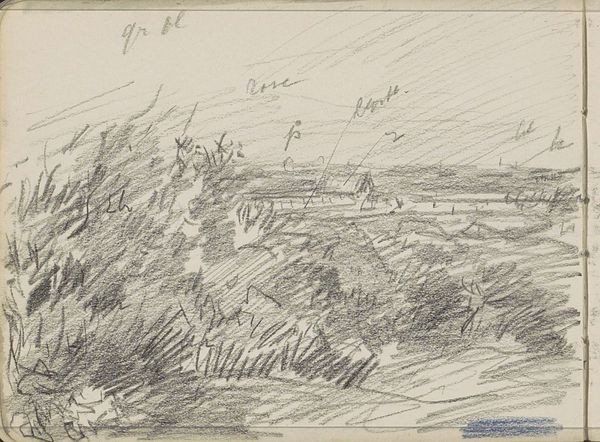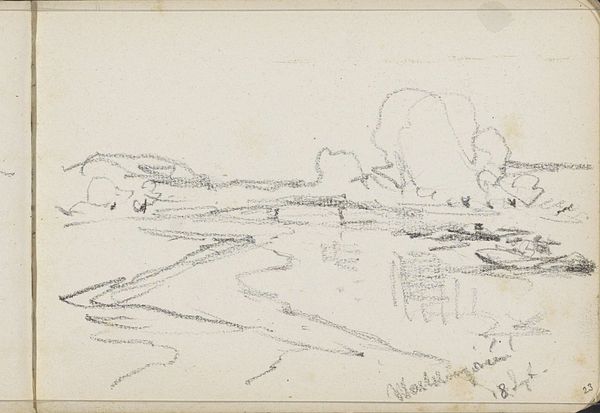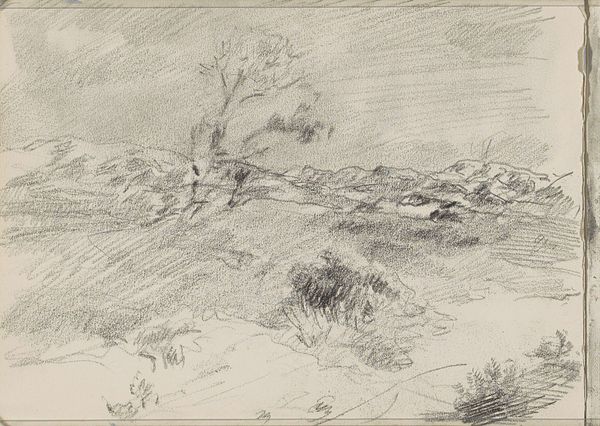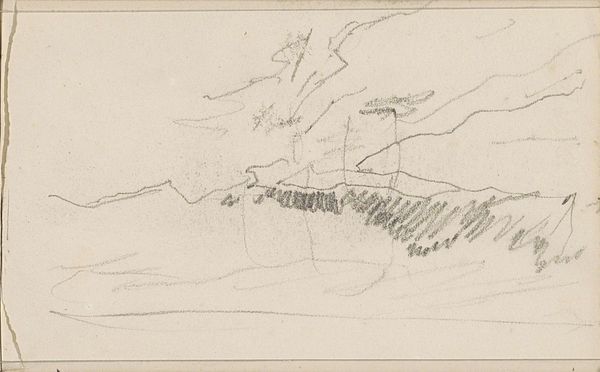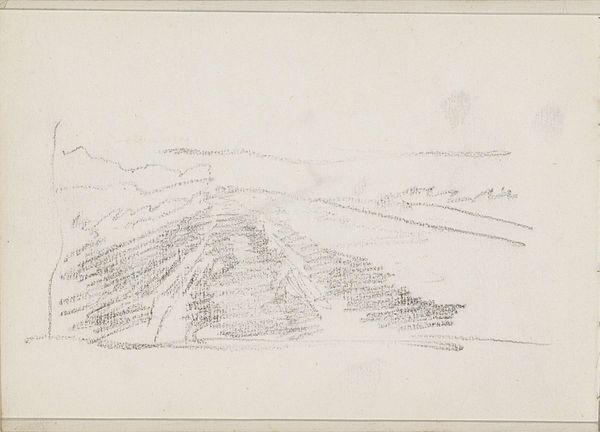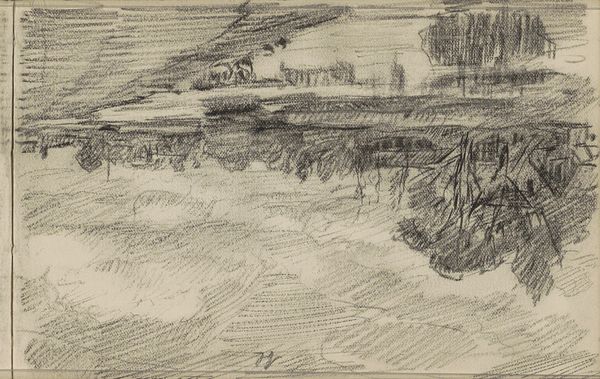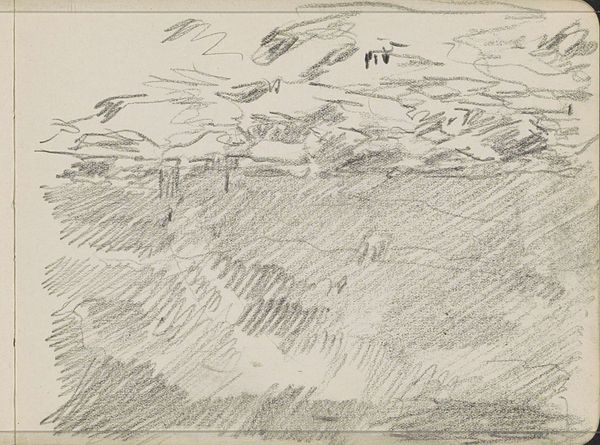
drawing, pencil
#
drawing
#
light pencil work
#
pen sketch
#
pencil sketch
#
landscape
#
personal sketchbook
#
sketchwork
#
ink drawing experimentation
#
sketch
#
pen-ink sketch
#
pencil
#
sketchbook drawing
#
sketchbook art
#
realism
#
initial sketch
Copyright: Rijks Museum: Open Domain
Curator: Before us we have "Landschap met bomen, mogelijk een duinlandschap," which translates to "Landscape with Trees, Possibly a Dune Landscape." It’s rendered in pencil and, intriguingly, the dating is rather broad, from 1881 to 1927, attributed to Johan Antonie de Jonge. Editor: Immediately, I’m struck by its provisional feel. The lines are tentative, searching. It reminds me of preliminary sketches in a naturalist's notebook, perhaps capturing a fleeting impression of the dunes. Curator: Precisely. The open sky above, suggested by almost scribbled lines, feels like a representation of immense possibility and also uncertainty. Notice how the deeper tones define the density of the lower area – suggesting hidden and untapped energy there, too. Editor: The sketchiness lends itself to a conversation about environmental precarity, about transient beauty. We are encouraged to reflect on the changing coastlines of the Netherlands, a place very much molded by the landscape's challenges and human agency. The loose style might echo that sense of changeability. Curator: Indeed. Beyond the ecological dimension, one might contemplate the Romantic movement here, which sought sublime encounters with nature; I sense that in de Jonge's treatment of the distant forms, and especially in the evocation of atmosphere. It seems, in its very unfinished nature, that de Jonge is seeking after a symbol or deeper reality. Editor: The very idea of "duinlandschap"—dune landscape—speaks to constructed ideas of land, nation, and home in the face of the raw elements. Considering that this dates between the late 19th and early 20th century, there's a strong association with debates about nationalism in art. How do you read that, particularly as the trees become less legible? Curator: Ah, the trees are essential as structural symbols, rooted yet reaching. It suggests a negotiation between belonging and aspiration—between being anchored and forever shifting. In that respect, you make an astute argument: nation is indeed embedded even in what might appear a simple sketch. Editor: A sketch pregnant with ideas. Makes one question the finality of the “finished” work. Curator: Quite right, an interesting lesson indeed.
Comments
No comments
Be the first to comment and join the conversation on the ultimate creative platform.
